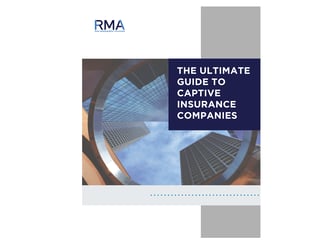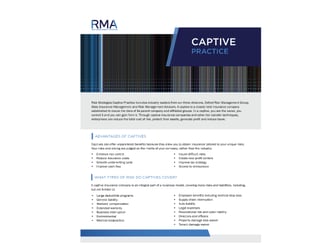When it comes to running a successful captive insurance company, proper structuring and governance are crucial. This includes effectively managing the company's finances and ensuring compliance with reporting requirements. In this section, we will explore the importance of financial management and reporting for captive insurance companies.
Financial Oversight and Reporting Requirements for Captive Insurance Companies
Financial oversight: Captive insurance companies are subject to strict financial oversight to ensure their financial stability and ability to meet policyholder obligations. This includes maintaining adequate reserves and implementing proper risk management strategies.
Reporting requirements: Captive insurance companies must adhere to various reporting requirements to demonstrate their financial viability. These requirements typically include submitting audited financial statements, regulatory filings, and capital adequacy assessments.
To navigate these requirements effectively, captive insurance companies often enlist the help of experienced financial professionals or insurance consultants who specialize in captive insurance. These experts can provide valuable guidance in structuring financial operations and ensuring compliance with reporting obligations.
Importance of Maintaining Adequate Financial Reserves
Adequate financial reserves: Captive insurance companies must maintain sufficient financial reserves to cover potential claims and unexpected losses. These reserves act as a safety net and help protect the company's solvency. Without adequate reserves, a captive insurance company may face difficulties in meeting its policyholder obligations or quick recovery from unforeseen events.
Managing risks: Proper financial management includes identifying and managing risks. This involves conducting thorough risk assessments, implementing risk mitigation strategies, and monitoring the company's overall financial health continuously. By effectively managing risks, a captive insurance company can minimize potential financial threats and ensure its long-term viability.
Proper structuring and governance of a captive insurance company require diligent financial management and compliance with reporting requirements. Maintaining adequate financial reserves and effectively managing risks are essential components of running a successful captive insurance company. By prioritizing financial oversight and reporting, captive insurance companies can demonstrate their financial strength and ability to fulfill policyholder obligations, ultimately enhancing their reputation and sustainability in the insurance market.
Explore
- Solutions
- Captive Insurance
- Captive Insurance Overview
- What is Captive Insurance?
- Definition of Captive Insurance
- Types of Captive Insurance
- Typical Structures of a Captive Insurance Program
- Why Form a Captive Insurance Company?
- Captive Insurance Utilization and Value
- Evaluating a Captive Insurance Program
- How to Setup a Captive Insurance Company
- Operating a Captive Insurance Company
- Captive Insurance Operating Costs
- Retaining Risk vs. Financing Risk
- Risk Distribution Through Captive Insurance
- Taxation of a Captive Insurance Company
- Captive Insurance Domiciles
- News and Insights
- About Us
Practice Leader(s)

Captive Practice Leader, Managing Director

Captive Practice Leader, Managing Director
Max Jong is the Captive Practice Leader and Managing Director at Risk Management Advisors, an alternative risk and captive management firm. Max began his career at Northwestern Mutual in 1994 after graduating from UCLA. Over 12 years, he built a successful financial services practice while heading up an office overseeing 50 professionals in Los Angeles and Irvine, California. The office was perennially one of the top producing organizations in the Northwestern Mutual system.
Max joined his partners at Risk Management Advisors in 2007 as he began to work with more sophisticated mid-market business owners. RMA specializes in the design, formation, and management of captive insurance companies. There’s also an emphasis on self-funded group benefits as well as other creative alternative risk management strategies. The firm assists business owners in better managing their risks without jeopardizing their balance sheets. In 2019, he headed up a merger with Risk Strategies, a Top 10 private national specialty insurance brokerage and consulting firm. Since then, he was appointed as the Captive Practice Leader to oversee the growth and development of the organization.
For five years, Max served as an Independent Director for Fiat Lux Risk and Insurance Company, one of the largest and most sophisticated captive insurance companies. Fiat Lux was established by the University of California Regents to better manage the broad risks of the University of California system.
Max has also been a lifelong supporter of Big Brothers Big Sisters of Greater Los Angeles. He initially volunteered to be a mentor in 1995 and is currently mentoring his second "Little." Max was asked to join the Board of Directors in 2000 and eventually served as their Board Chair. After 20+ years as an active board member, he continues to support the organization by serving as a Trustee.
He is married to Alice, and they’re raising two young children, Hunter and Hayden. Max and Alice are happily married despite her irreparable mistake of going to USC. He loves to travel, golf, and is a hopeful Lakers fan.
Resources








